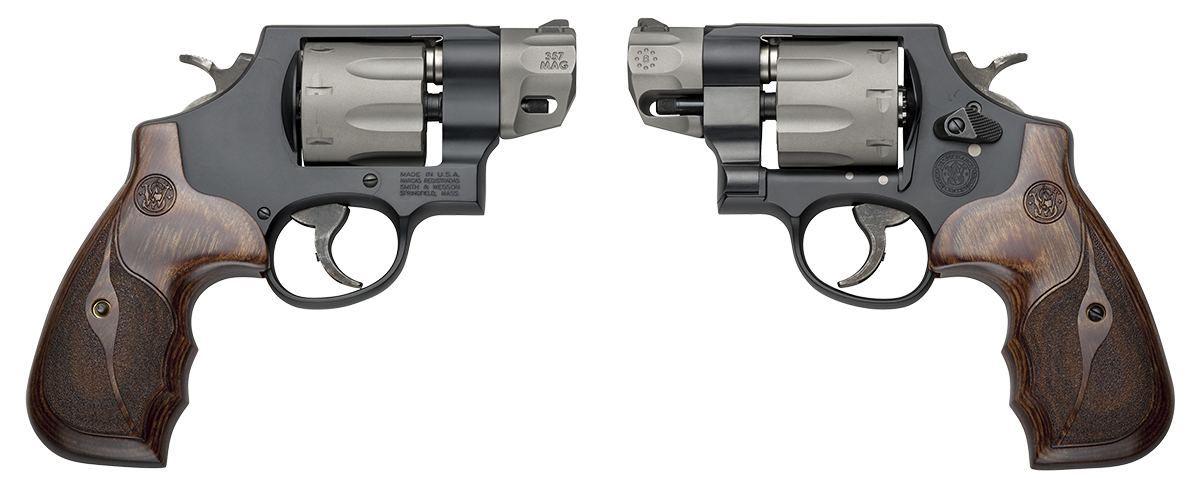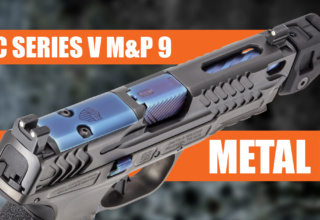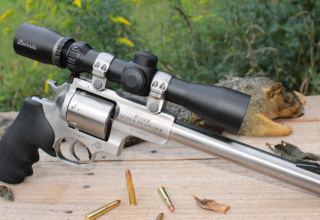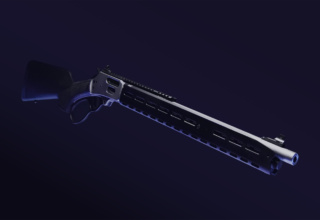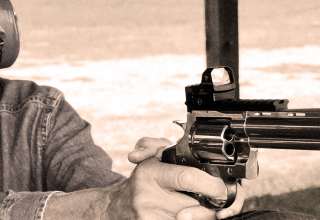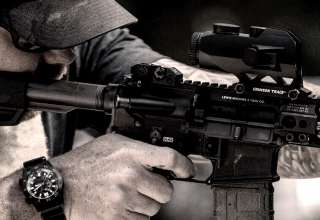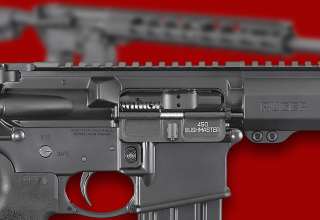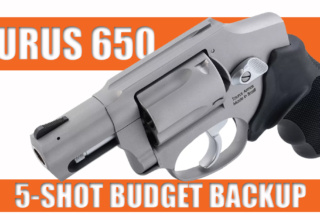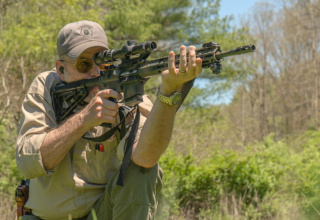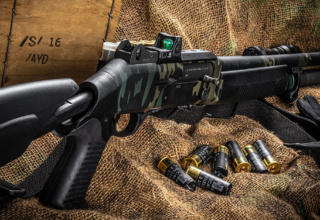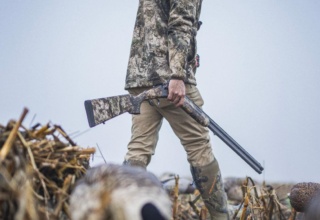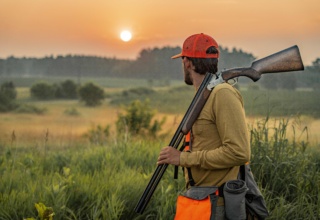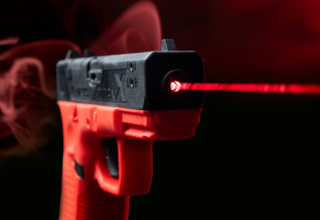This premium Model 327 in .357 Magnum may be the ticket for those desiring a highly capable revolver for everyday carry
by Dr. Martin D. Topper
I grew up in the years before semi-autos had polymer frames and could reliably feed anything except hardball. I tried carrying a broad variety of semi-auto pistols and many brands of early hollow points, but sooner or later the issue of reliability raised its ugly head and I went back to a snub-nose revolver as my carry gun. Yet as time went by, semi-autos became more reliable and the ammo they used just kept getting better and better. In the end, a five- or six-shot revolver just did not stack up against multiple assailants with high-capacity semi-autos. Like many other people who carry daily, my subbies spent more and more time sitting in the safe.
S&W’s Performance Center Model 327
The S&W Performance Center Model 327 is a handgun that’s aimed at closing the revolver/semi-auto gap. It’s built with the most modern materials and is well-designed and well-balanced. As for materials, the frame is made from S&W’s extra strong scandium-aluminum alloy. The cylinder and barrel shroud are made of titanium and the 2-inch barrel is constructed of stainless steel. This combination of materials kept the weight of the gun down to a carry-friendly 22.6 oz., making it the lightest N-Frame I’ve ever tested. Even so, it handled the recoil of magnum loads very well.
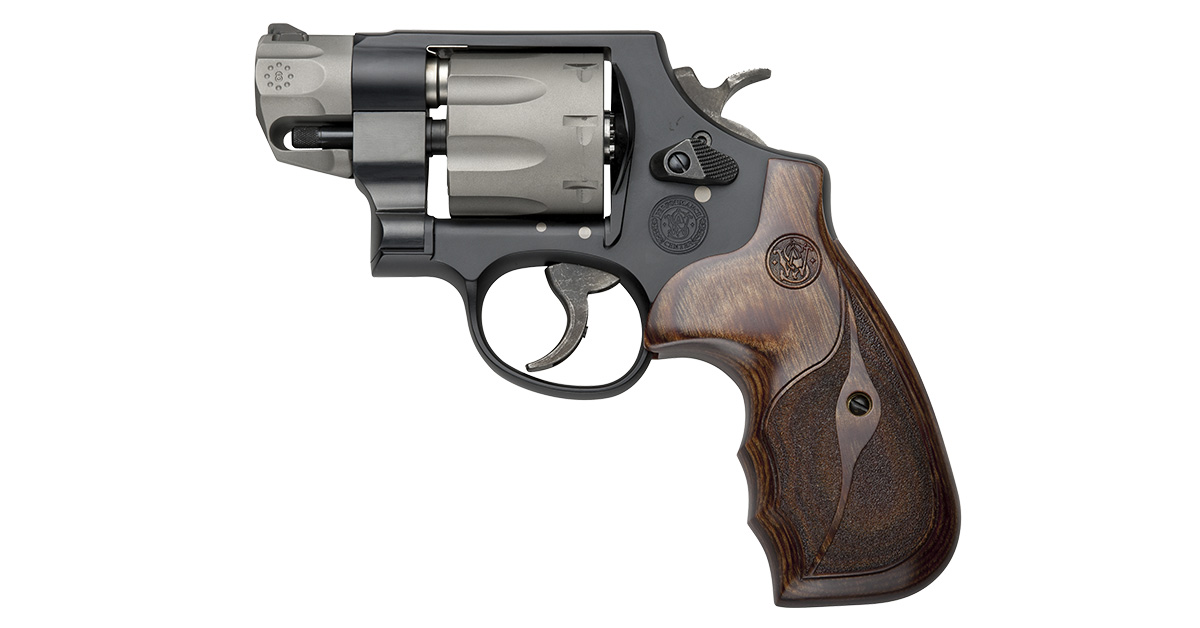
Quality of design and construction were generally excellent. The cylinder has a three-point lock-up with a third locking point in the crane. Because of this, it displayed minimal rotational play when the gun was cocked and uncocked. It also displayed minimal back and forth play, which is not at all unusual with S&W scandium/aluminum frames. (My scandium/titanium M340PD had hundreds of magnum and +P rounds fired through it and never experienced any frame stretch.) In addition, all lines of the M327 were straight and all exposed edges were properly radiused to prevent excessive wear on clothing when carried concealed. As for the wood grip, it was beautifully made and had a matte dark walnut finish that complemented the matte black hard-coat anodized finish on the frame. Fitting of the cylinder, side plate, and grips was well-executed. The cylinder gap was a bit wide at .011 inches, but it was consistent for all chambers.
I did, though, have a few issues with this revolver.
First, since it is a defensive carry gun, I’d prefer it had night sights or a laser for maximum low-light capability. Second, the grip did not fit my hand and caused some irritation. If this were my gun, I’d solve both these issues by installing a Crimson Trace LG-314 over-molded laser grip.
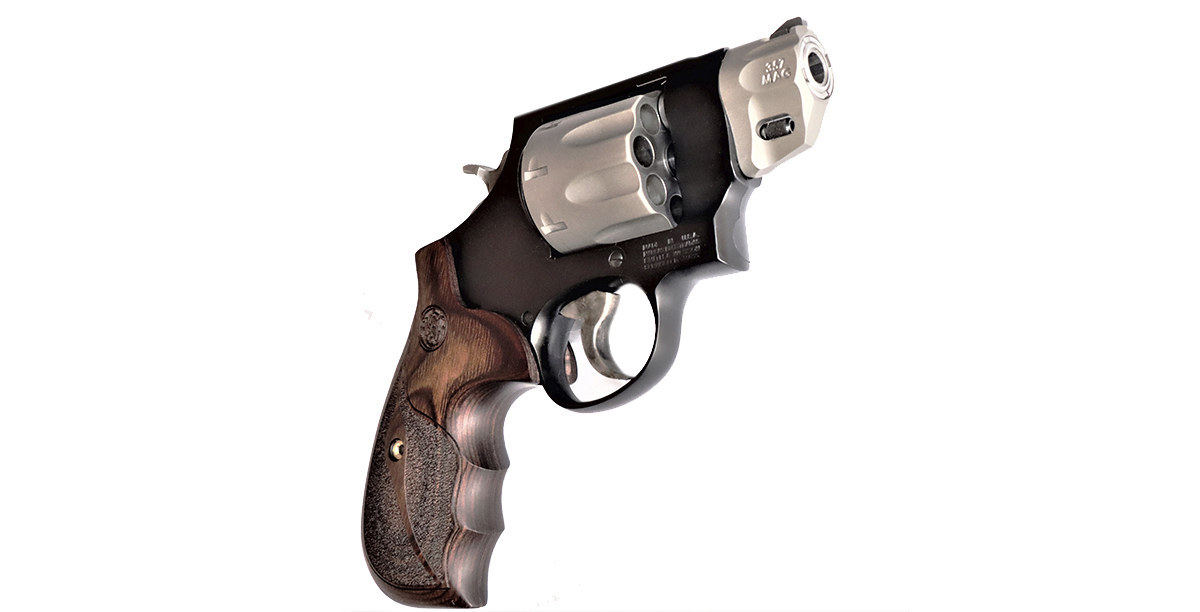
A final issue involved the trigger pull. It measured 12 lbs. in double-action mode and 4 lbs. when fired with the hammer cocked. These trigger pulls were quite heavy for a lightweight gun with a short sight radius. I’d recommend a gunsmith fine-tune the trigger action.
Live Fire
Since this is essentially a close-quarters self-defense revolver, bench rest targets were fired at 15 yards, drills from the holster were run from seven yards, and testing in bare 16-inch clear ballistics gel was conducted from seven feet. Magnum loads from Federal Premium, Speer, Black Hills, and Hornady were used to test accuracy, velocity, expansion, and penetration in gel. All loads were fired twice into the gel block, and only two of the eight shots stayed in the 16-inch block. The first was a Federal 140-gr. load with a Barnes X bullet that partially expanded and tumbled. The second was the Speer 135-gr. Gold Dot load. Given that this was a standard 16-inch-long block of gel, it may simply be that the other six shots expanded to some degree but penetrated deeper than anticipated.
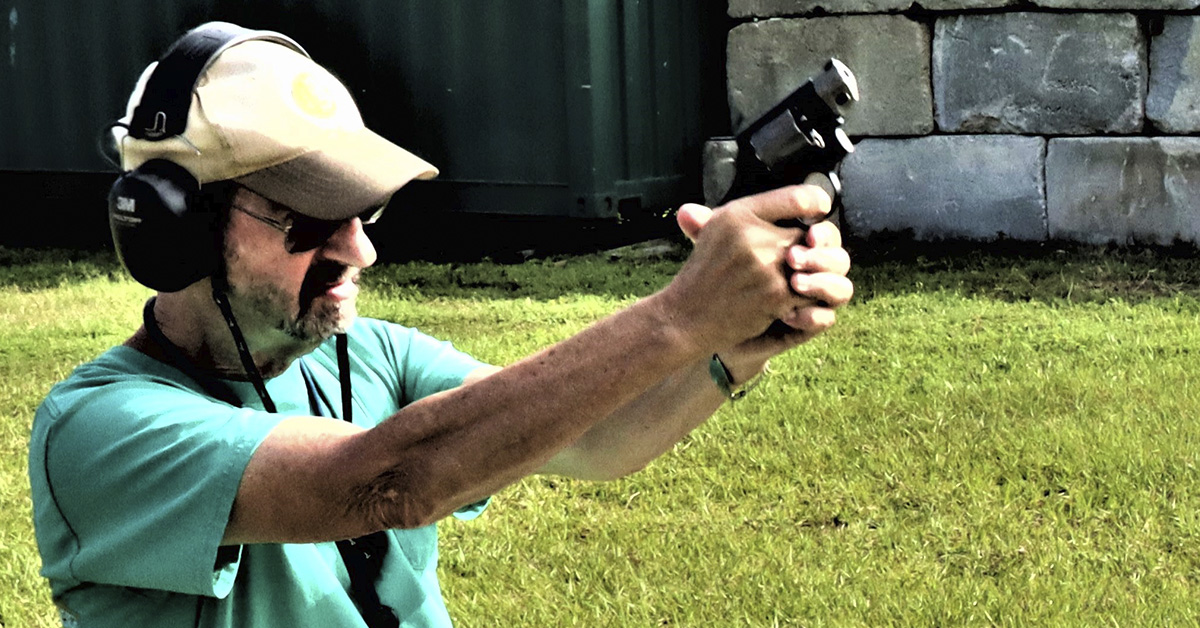
Velocity readings were taken with my Competition Electronics ProChrono Digital chronograph. They indicated that the Hornady, Federal, and Black Hills loads all displayed significantly lower average velocities than the factory published velocities from a 4-inch barrel. For example, the Federal 140-gr. Barnes X load produced an average of 1088 fps as opposed to 1400 fps; the Hornady 125-gr. FTX produced an average of 1144 fps as opposed to 1500 fps; and the Black Hills 125-gr. JHP produced an average 1062 fps as opposed to 1500 fps. Given this, the M327’s 2-inch barrel may not have produced the velocities needed to expand the bullets used in these loads.
The Speer Short Barrel load was designed for a 2-inch barrel. It produced 976 fps, which was only a bit slower than the 990 fps listed in the Speer factory specifications for a 2-inch barrel. In addition, the Speer bullet that was recovered looked very much like the expanded bullet photos that have been released by the CCI factory.
Accuracy was tested using a rest from 15 yards. The target was a standard 25-yard repair center used for the timed and rapid-fire stages of Bullseye matches. All shots were fired single action and were on the target. The Hornady and Federal loads produced best scores of 47/50 points and the Black Hills and Speer loads produced best scores of 37/50 points. All these scores represented reasonable performance given the weight of the trigger pull, weight of the gun, and the short sight radius.
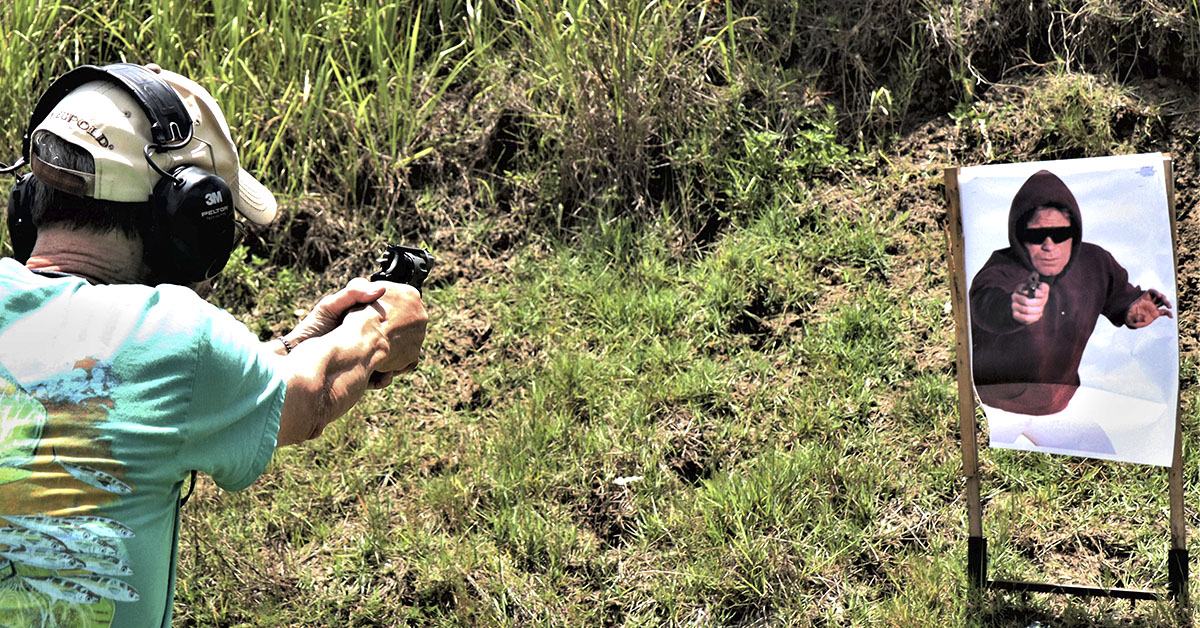
Six seven-yard drills were fired using the 140-gr. Federal load. The drill required the M327 to be drawn from a concealed holster while one step was taken to the right. Then one shot was fired double action toward the center of the chest using an isosceles stance. The times for the drills were recorded on my Competition Electronics shot timer. The average was 3.85 seconds, which is about 1.25 seconds more than my average time with my 9mm S&W Shield 2.0, which has an Apex Tactical trigger. All shots from the M327 landed solidly into vital areas, clearly indicating that this pistol could place shots on target in a common tactical scenario.
Enhanced Revolver
This test of the M327 clearly indicated that it is an enhanced revolver. It does not have the capacity of a double stack semi-auto or even a “stack and a one-half” sub-compact auto pistol. It does, though, have moon clips that are probably the fastest way to reload a revolver, and clearly are the most secure method of carrying a revolver reload.
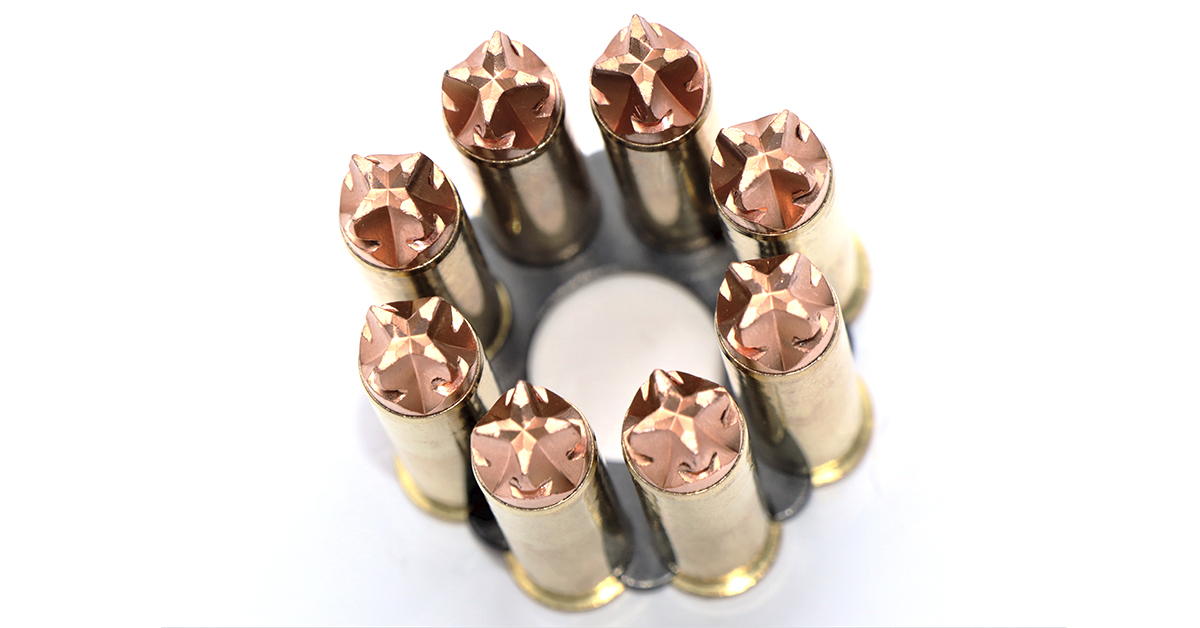
As far as on-target performance is concerned, this handgun delivers the velocity and energy of a 9mm from its short 2-inch barrel. With one of the early-generation .357 Magnum loads with lightweight exposed lead hollow points, it is likely to deliver more bullet expansion and less penetration. Lastly, with some trigger work, it should deliver tactical drill times that are similar to my enhanced 9mm Shield. Of course, it is an N-frame gun and not as easy to conceal as many sub-compact semi-autos, but as my good friend Evan Marshall has said many times, “You dress around the gun.”
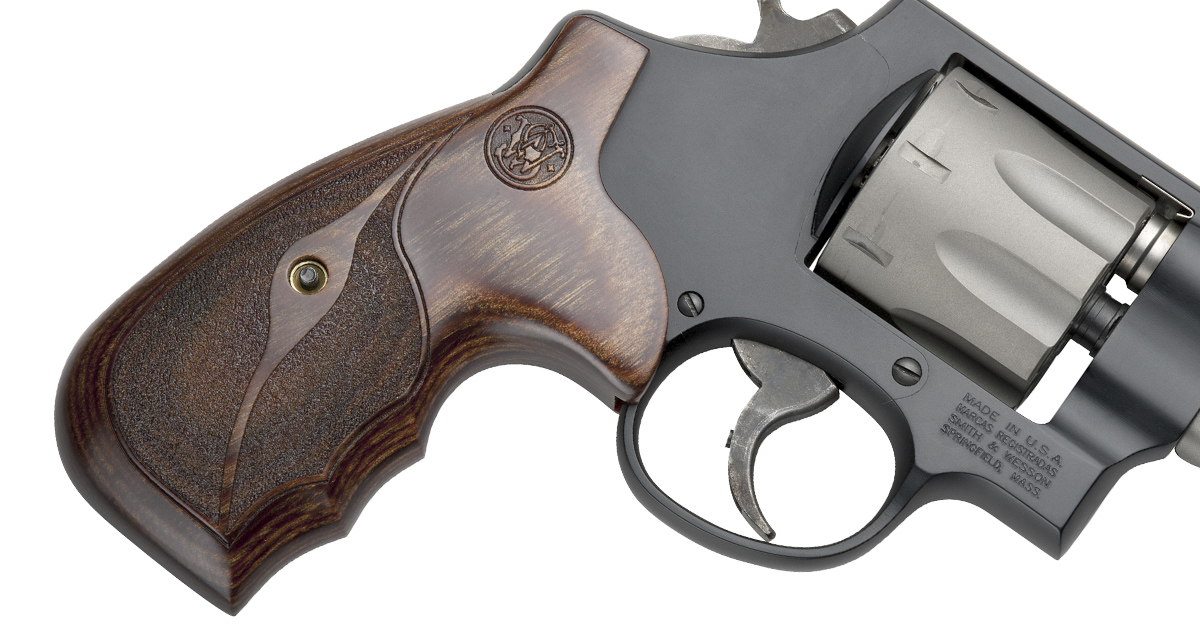
Everything taken together, the M327 clearly is an enhanced revolver that has clear potential for those who favor revolvers and are willing to pay a premium price for a Performance Center handgun.

It is also important to point out, though, that there are some activities for which the M327 beats just about any semi-auto. Those activities are hiking, hunting, fishing, and most anything you do in the outdoors. That’s because there is no semi-auto that I know of that functions well with snake loads. Those loads simply don’t generate enough recoil to operate semi-autos reliably. Not only will the M327 handle snake loads reliably, it will also shoot the heavier and deeper penetrating fluid transfer monolithic ammunition like the 127-gr. Black Hills Honey Badger with complete reliability. This can be very comforting when you’re out in areas where man is often not the apex predator.
So, in the end, the S&W Performance Center Model 327 will not replace semi-autos, but it does have significant enhancements that extend its utility and make it a viable alternative, depending on your lifestyle.
S&W M327 Performance Center Revolver Specifications
- Caliber: .357 Magnum, .38 Special +P
- Action: single/double action revolver
- Capacity: 8 rounds in moon clips
- Length: 7 in.
- Weight: 22.6 oz. unloaded
- Barrel: 2-in. stainless steel insert with titanium shroud
- Frame: matte black hard anodized scandium/aluminum alloy
- Front Sight: orange ramp
- Rear Sight: integral U-notch
- Grips: wood
- MSRP: $1364
- Anaconda vs. Hog - November 7, 2022
- TESTED: Crimson Trace CTS-1100 Battle Sight - April 13, 2022
- Profiles in Firearms: Ruger AR-556 MPR .450 Bushmaster - January 4, 2022

